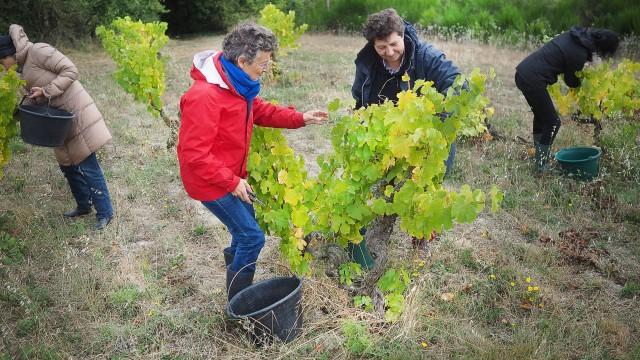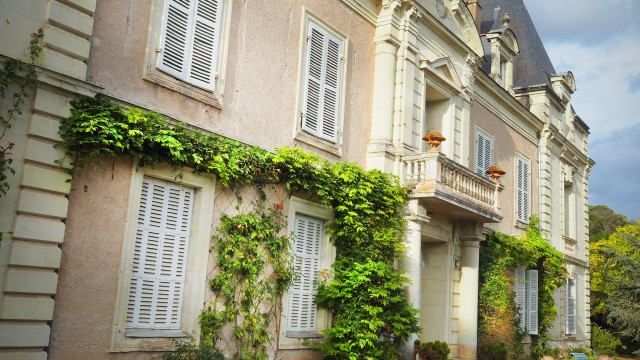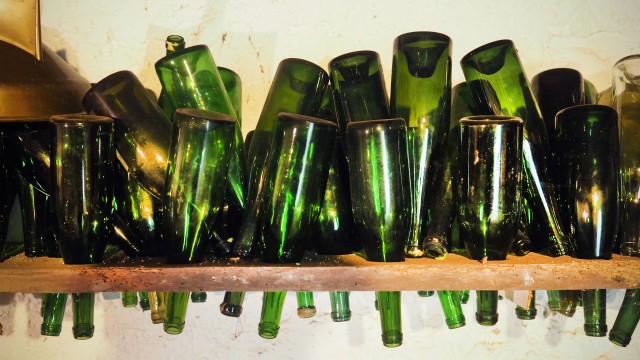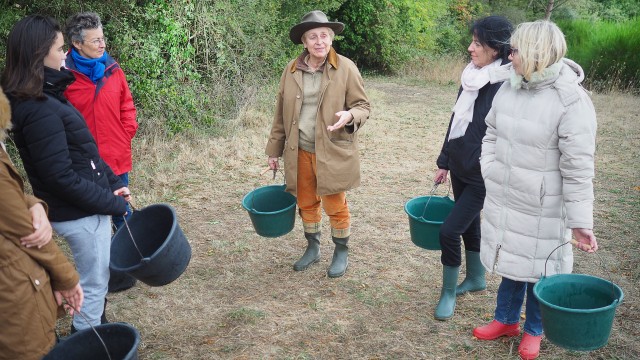Put on your boots, grab your secateurs and head off to pick grapes before foot-treading and pressing them! At the start of every October in Savennières, Anjou, the prestigious Domaine du Closel offers an immersive day in the life of a winemaker. Here's our report.
First contact with Domaine du Closel
Surrounded by the mouldings and gilt of the large dining room in the majestic Château des Vaults, Evelyne de Pontbriand gets to work. It's midday, and the winemaker at Domaine du Closel, located in the famous Savennières appellation 15 km from Angers, is getting ready to welcome the apprentice harvesters. Before sending them to try their hand in the vines, she's planned a delightful organic brunch for them cooked specially by Sofiane, a local farmer and cook. The dozen or so guests' eyes widen when they see the generous buffet. It's the first surprise of the day for the one-time winemakers, who are accountants, medical secretaries, cooks, farmers, archivists etc. in their day jobs. "We came specially from Brittany," Catherine and Martine tell us. "We learnt about the idea when we visited the estate a few weeks ago." Conversation flows between mouthfuls, washed down with the place's wines. Then it's a quick dab of a napkin and time to set off! The group leaves the bourgeois dining room, puts on their boots and heads for the vines.
Secateurs in hand in the vines!
You have to climb up a bit, cross a little bridge and walk through the vegetation to reach the slope where the Bacchanalian treasures grow. "This is the intersection of the Bassin Parisien and the Massif Armoricain," explains Evelyne. The ex-French teach joined the family business in 2001, taking over from her mother Michèle. "We've been making wine here for 600 years, so you have to treat the vines with respect, they're old ladies... Right, time to get to work, each of you pick up a bucket and a pair of secateurs!" The little assembly gets ready for battle, with each person choosing a row and setting to work. "Be careful not to harvest the verjus! They're the little green grapes that haven't ripened yet, they make the wine taste too acidic." Bursts of laughter can be heard here and there. "Hey, stop stealing my bunches!" shouts Patrick, laughing, at one of his workmates. The forty-something man has come with two childhood friends for a joint birthday celebration. Their wives are here too, as are children Emma and Julie, who play games and gambol from one parcel of vines to another.
A fascinating discussion with the winemaker
The lady of the house is all too willing to give advice and answer questions. "How big is the vineyard?" asks Daniel, a retiree who has come from l'Oise with his wife. "15 hectares, which is not actually that big. We only make small quantities." "Could you tell us how many château farm the Savennières appellation?" "Only 14, which is amazing for village of 2,000 inhabitants!" "Do you export much?" "Around 60% of our production, mainly to Norway and the United States." This is a wine with an international reputation, which Louis XI called "drops of gold" and which knocked Louis XIV sideways when he tasted it at the château de Serrant.
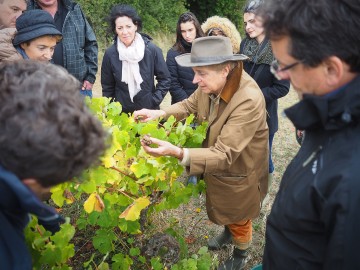
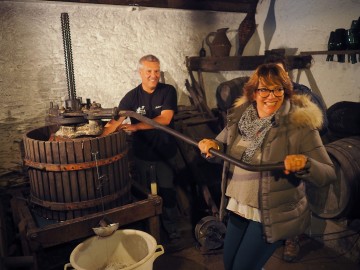
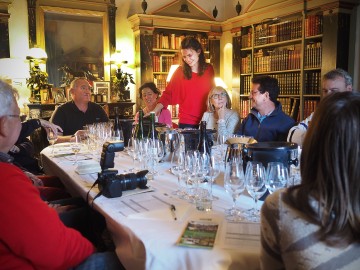
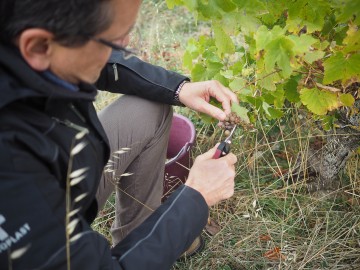
Some winemaking secrets
"It's important to remember that we pay a great deal of attention to the environment," explains Evelyne. "I generally believe that wine tastes of where it was made. We don't use pesticides, we let the surrounding trees control the hydrometry, we use liquid manure made from nettles to encourage photosynthesis, etc." The sunshine and the nature of the soil, which is made up of schist along with sandstone and volcanic rock, also play a part. "The harvest period also counts. The vines flower in June, and if we harvest the grapes 100 days later, they will taste of fresh fruit. Ten days after that, you'll get notes of pear, and if you leave it even later, it'll be honey."
Time to press!
After two hours of gentle work, the buckets look nice and full. It's time to take them back to the van. "What a lovely harvest!" smiles the boss. Then it's time to head for a little old stone building, where Bruno Perray, the head winemaker, awaits the visitors. He looks amused as the guests are invited to remove their shoes to foot-tread the grapes. They then press their harvest, pushing with all their might on the wooden crank handle of the old press. The resulting juice, known as bernache, is bottled, allowing the valiant winemakers to leave with some of their own wine.
A tasting to finish
The last stop is in the château's library, which guests access through the magnificent English-style garden. It's time for them to be treated to a tasting of the estate's wines. It's an opportunity to stock up on a few bottles, and for Evelyne, an ardent enthusiast, to tell them a few extra anecdotes. "It was absolutely fantastic," gushes Patrick, "learning about the work of a winemaker like that, being fully immersed in it, is a rare privilege." The participants leave starry-eyed. One thing's for sure: they'll never again see a bottle of wine in the same way.



